While some are enjoying the spring, others are sneezing and are afraid to go outside. But the house for an allergy sufferer is also full of dangers: dust carries allergens, and dry air contributes to this. For severe cases, allergists use the so-called “clean rooms”, where professional air filtration systems are responsible for the absence of allergens. Is it possible to arrange something similar at home? Will humidifiers, vacuum cleaners and air purifiers help? If so, which ones? We figure out which household appliances are really useful for allergy sufferers, and which are not, despite the assurances of manufacturers.
Humidifiers
This is the first thing that allergy sufferers are advised on social networks and forums, doctors also support. Moist air makes it difficult for allergens to move: the smallest particles of pollen, absorbing moisture, become heavier and sink to the surface – thus, fewer of them enter the human respiratory tract. It would seem that buy any humidifier – and you will be happy. However, they do not know how to effectively clean the air from the smallest particles (the same pollen), they do not have a filtering system, so you should not expect miracles from them. In addition, each type of humidifier has nuances that should be considered.
Ultrasonic
Ultrasonic humidifiers that produce finely dispersed cold vapor (or rather, fog) increase the humidity level quite quickly, but unevenly: its parameters near the device and at the other end of the room will be very different. There is also an inconvenience for the consumer: in an ultrasonic humidifier, it is imperative to use only purified softened, or better, distilled water, otherwise the hardness salts contained in it are released into the air along with steam and settle on furniture and other surfaces, leaving an ugly white coating on them. But it’s not just about aesthetics: the same hardness salts can become an additional irritating factor for the allergic person’s respiratory system. Some ultrasonic humidifiers have built-in water filters, but they need to be changed every few months, and you should make sure that they are available when buying a device.
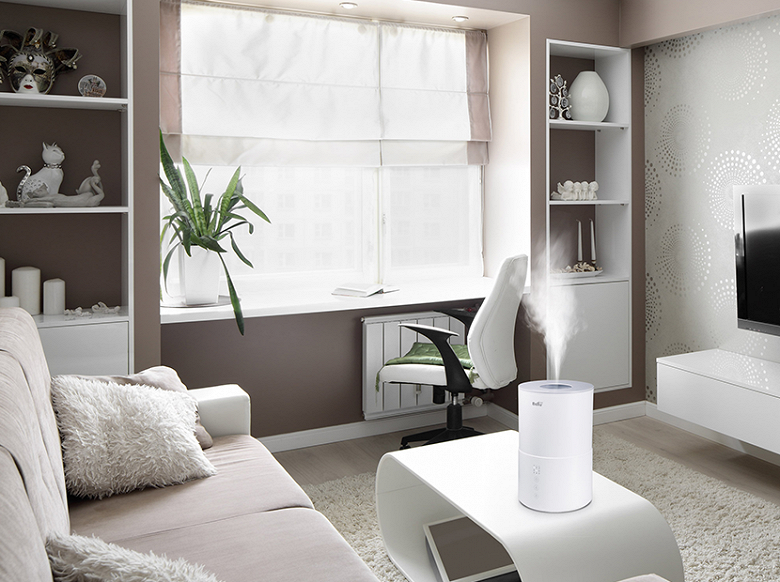
In short: better than nothing.
Steam
Steam humidifiers are not common, but it is still worth saying a few words about them. They humidify the air with warm steam, do it efficiently and quickly, but with them there is a risk of waterlogging: you must always make sure that the relative humidity level does not exceed the recommended level for rooms (40%-60%, WHO). Modern models have built-in electronic hygrometers, but they can be inaccurate, you should insure yourself with a conventional mechanical one. With excess moisture, there is a risk of mold on the walls and ceiling. And this is another story, dangerous not only for allergy sufferers, but especially for them.
In short: a good supplement, but you need to monitor the level of humidity.
Air wash
These devices are often called hybrids of a humidifier and an air purifier: they work on the principle of natural evaporation of moisture and at the same time purify the air of dust. Inside the air washer there is a rotating drum with a cleaning cassette partially lowered into a water tank. The drum rotates, the dust contained in the air falling on its blades settles in the water, and the water droplets evaporate from its surfaces in a natural way and humidify the air. Air washers today are the most efficient, convenient and safe humidifiers: they do not over-moisten the air, do not contribute to the release of hardness salts into the room, and clean the air from dust – although, of course, not completely. The most modern models are supplemented with HEPA filters for outgoing air, which brings the air washer closer to a full-fledged air purifier, although there is still a difference – and above all, in performance: air purifiers have it higher.
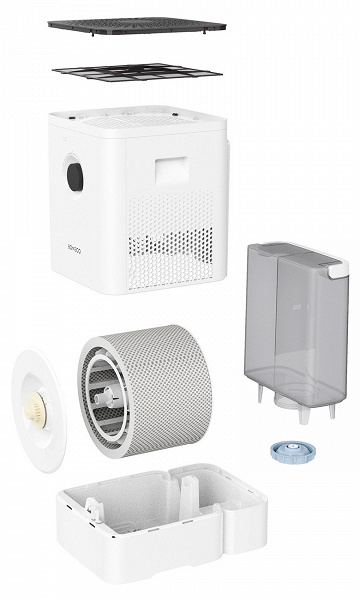
Briefly: yes. If it is not possible to buy an air cleaner with a HEPA filter, it is quite an alternative.
Air cleaners
Their effectiveness directly depends on the type, performance and type of filters used.
Electrostatic (ionizers, ozonizers)
The cheapest and, alas, inefficient. They drive air through an electrostatic chamber where dust is treated with negatively charged ions and deposited on plates with an opposite, positive charge. The performance of such air cleaners is quite low, on average 15-25 m³ / h, so they simply cannot cope with most of the pollution. In addition, they unnecessarily saturate the air with ozone: it is important whether there is an ozone neutralizing filter. Of the benefits – they do not require the replacement of the main electrostatic filter, only flushing.
In short: rather not.
Air cleaners with HEPA filters
Such devices are “sharpened” specifically for cleaning the air from the most dangerous pollutants – particles up to 2.5 microns in size, the so-called PM2.5. These include tobacco and other smoke, pollen, etc. There is simply no other way to trap these particular particles. So, we choose an air cleaner with the highest class of HEPA H 14 filter – and here it is, the purest air? However, not all so simple.
First, let’s talk about the performance of the air cleaner, which is determined by a combination of the single-pass efficiency of the device (as a percentage; roughly speaking, how much air entered and how much came out through the filtration system) and the fan speed (in cubic meters per hour). This indicator is called CADR (eng. Clean air delivery rate, clean air supply rate). An air cleaner that claims to be efficient must have a certificate indicating this indicator is not lower than 100, this will be the real performance – at the air outlet, and not at the inlet to the device. Because if the fan blows, say, 120 m³/h into the air cleaner chamber, but the single-pass efficiency of the device is low due to a leaky case, then the real performance will be significantly reduced.
Now about the filtration system itself. The air is forced into the air cleaner and passes through a complex system of filters – coarse, bactericidal, coal and at the outlet to the room – HEPA (High Efficiency Particulate Air or High Efficiency Particulate Arrestance – highly effective particle retention). In household appliances, fine filters EPA 10, 11 and 12 and HEPA 13 and 14 are used, the latter is the highest, retaining up to 99.995% of the smallest particles smaller than 1 micron. EPA filters 10, 11 and 12 are less efficient. Manufacturers often label them with HEPA, although leading companies have long removed the first letter H (High, high-performance cleaning) from this abbreviation due to inconsistencies: for example, EPA 10 (or HEPA 10) filters only trap 85% of the smallest particles, EPA 11 (or HEPA 11) – 95%. Many experts believe that this is quite enough, since it is still unrealistic to achieve a higher level of cleaning in household appliances due to the impossibility of ensuring complete tightness of the equipment, and all manufacturers’ tests are carried out in laboratory, and not in real conditions. Therefore, all these 99.99 …% are nothing more than marketing bait. Believe it or not, everyone decides for himself.
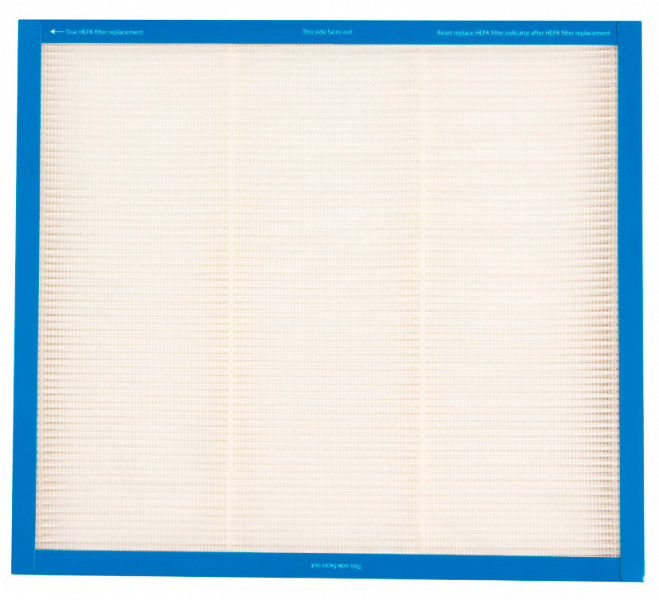
But what is really important is to change the HEPA filters in time, otherwise they become clogged, become useless and critically reduce the performance of the device. It is more convenient if the HEPA filter is washable: then it will last for a long time, but it will also have to be changed in accordance with the requirements of the instructions.
Some models are supplemented with various useful functions – ventilation, ionization, aromatization, air humidification. For allergy sufferers, the latter is the most useful, and aromatization is the most harmful. This does not mean that you need to look for a device without it, but it is better not to use it.
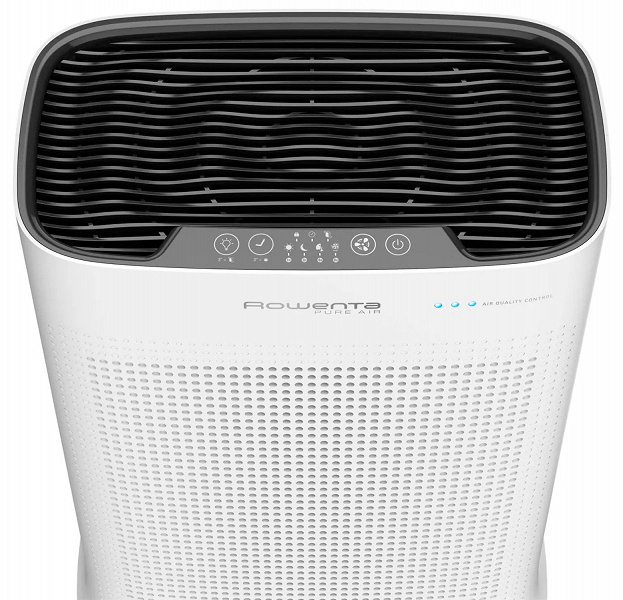
Briefly: the best option if the CADR is not lower than 100 and the HEPA class is not lower than 11.
Photocatalytic air cleaners
These devices pass air through a catalytic filter that decontaminates the air. Titanium dioxide acts as a catalyst, which, under the influence of ultraviolet radiation, oxidizes organic compounds contained in the air, decomposing them to water and carbon dioxide. The resulting water is used by the humidifier. It seems to be a great idea: no consumables, environmentally friendly and economical. But experts argue about efficiency and safety. This cleaning method works only with organics, it “does not take” inorganic compounds and, therefore, will not cope with pollutants such as smoke, formaldehyde, etc. In some photocatalytic models, electrostatic filters are additionally installed (which means that again ozone and an ozone neutralizing filter is needed ), carbon filters to absorb smoke, formaldehyde filters, as well as HEPA filters to retain most of the smallest particles (which means that consumables are still inevitable, but “full stuffing”). In addition, there are questions about the quality of photocatalytic air purification by a household appliance. After all, the technology came from industrial systems, where the catalyst is not applied in a thin layer on the surface of a small filter, but is used in full, like UV radiation, the sufficient intensity of which cannot be provided in a household air purifier, because it is unsafe.
In short: if you really take it, then with a HEPA filter, not relying only on photocatalytic purification. And look at SADR.
Vacuum cleaners
With HEPA filters
Vacuum cleaners with HEPA exhaust filters are often advertised as if they were air purifiers in their own right, whose main job is to purify the air. Of course, the presence of a HEPA filter in the vacuum cleaner is good, but it only guarantees the retention in it of those particles that were sucked from the surfaces during cleaning. Since vacuuming does not involve waving the nozzle in the air, it is still not necessary to talk about air purification. Although, of course, the atmosphere in the house after using such a vacuum cleaner is cleaner than after the exhaust horrors of some antediluvian model.
Briefly: yes, but if there is an air cleaner, the class of the fine filter in the vacuum cleaner is not critical.
Cyclones
Despite the high popularity of models of bagless cyclone vacuum cleaners, experts believe that bag models are more suitable for allergy sufferers. Firstly, a high-tech replacement bag is always made of a multilayer material, which in itself increases the number of levels in the filtration system. Secondly, when removing from the vacuum cleaner, the opening of the bag is automatically blocked by a valve, and dust does not get out, while when removing dust from a plastic container, contact with it is almost inevitable. Yes, bags are consumables, but in principle they are preferable for allergy sufferers.
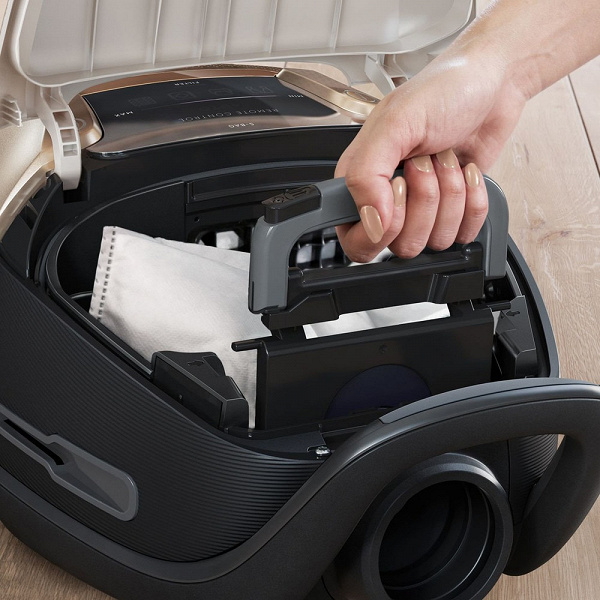
In short: a good bagged vacuum cleaner is better.
detergents
Classic washing vacuum cleaners are often bought in the hope of “easy and fast”, and also often do wet cleaning. The idea is excellent and useful for allergy sufferers, but it is difficult to implement it. Washing vacuum cleaners require rather complex assembly (and then disassembly), filling and then topping up with water, they have many accessories that require storage space. All this kills the idea of frequent wet cleaning, necessary for allergy sufferers: a mop is faster. In addition, when wet cleaning home textiles (especially carpets with long pile), you need to dry them completely, otherwise they will become an excellent breeding ground for microorganisms. Which are correct! – Allergy sufferers do not care.
In short: rather not.
With wet cleaning function
Upright vacuum cleaners and robotic vacuum cleaners with a wet cleaning function are much simpler: a microfiber cloth is attached to the main nozzle, which is periodically slightly moistened with water from the built-in reservoir. The nozzle removes dust and debris, and then the napkin wipes the floor: quickly and without much hassle. However, ordinary upright vacuum cleaners and robots also help to keep cleanliness very well – this is what is important for allergy sufferers, and not general cleaning once a month.
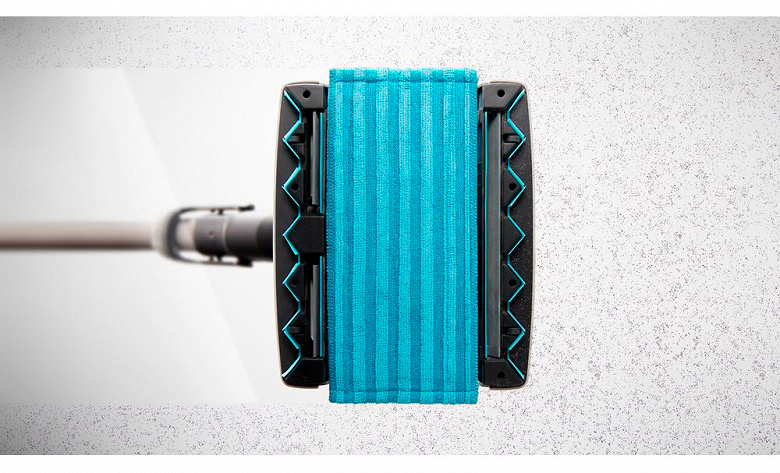
Briefly: yes, as an additional tool.
With aquafilter
Vacuum cleaners with water filters have always been positioned as a godsend for allergy sufferers, some models are even recommended by professional associations of allergists. In these models, the air entering the vacuum cleaner passes through the water filter, where all large and most of the small particles settle. Thus, the load on the filter of the air leaving the vacuum cleaner (usually HEPA) is significantly reduced, and its service life is extended. In addition, although cleaning the container from dirt is a rather unpleasant task (“add a liter of water to the aquafilter and pour it into the toilet bowl” does not work, for example, in an apartment with animals – wool and cat litter can easily clog the sewer, so they must first be removed from the container), the user does not deal with dry dust, and therefore, it is safer for an allergic person. But we must understand that such vacuum cleaners are not an alternative to air purifiers and humidifiers. Compare: to bring the level of relative humidity in the room, for example, from 30% to the recommended 40%-60%, a humidifier of any type takes several hours. Cleaning a room with a vacuum cleaner takes 10-30 minutes (if with furniture), how can he “effectively humidify the air” with an aquafilter during cleaning?
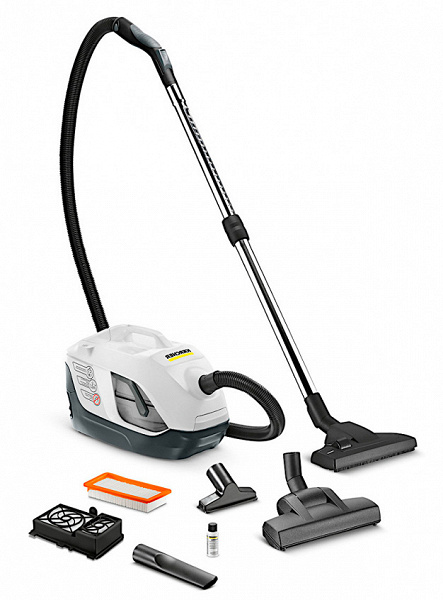
Briefly: yes, but there are limitations and this is not a panacea.
Steam cleaners and steam mops
These devices do not purify the air, but they clean surfaces well, on which allergens settle along with dust and dirt. The main advantage of steam for allergy sufferers is not only an improvement in the quality of the wet cleaning they need, but first of all, the denaturation of proteins, to which, in fact, there is an allergy. In other words, the high temperature of the steam renders them harmless. Steam cleaners are more versatile and suitable for a variety of and differently located surfaces, steam mops will only help with cleaning floors, but both are good for allergy sufferers.
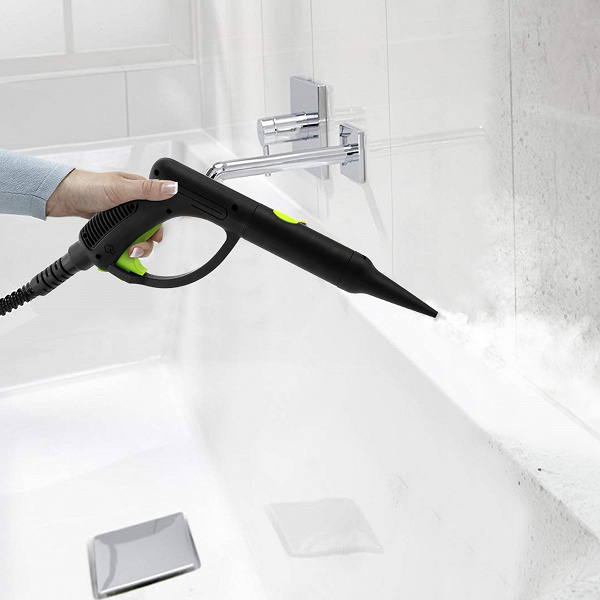
In short: great extra help.
***
Of course, making a real medical “clean room” out of an ordinary house will not work, but household appliances can significantly help in creating an atmosphere suitable for allergy sufferers. We hope that our little educational program will contribute to this.





